Entries from Expedition Dispatches
Leaving Deboche this morning we walked through the last of the rhododendron and pine trees of the Khumbu, climbing higher into the valley where only small shrubs and juniper grow. We crossed back over the Dudh Kosi river on a narrow bridge and walked past rows upon rows of Mani stones and chortens, eventually reaching the small village of Pangboche. There, we paid a visit to Lama Geshe, the renown spiritual leader. Chanting in his native tongue of Tibetan, he blessed us on our journey into the mountains, writing a letter to Chomolungma, the goddess of Everest, requesting safe passage for us. Finally, laughing a deep soulful laugh each time he pronounced our anglophone names, he strung a small red string and then kata scarf around our necks, before wishing us good luck.
The day remained clear and we had wonderful views of Ama Dablam soaring above us as left Pangboche, climbing further up the valley towards the impressive south face of Lhotse. Eventually, we reached a split in the valley, where the rivers diverge, one coming from Island Peak and the other from Everest's Khumbu Glacier. Following the Dudh Kosi towards Everest, we climbed up and over a shallow pass on the trail before dropping into the village of Pheriche. There Ang Nuru, a vibrant and energetic sherpa happily welcomed us into his teahouse, making us comfortable in the wonderfully decorated dining room.
In the afternoon we strolled over the the Himalayan Rescue Association's Pheriche Clinic and listened to a discussion on altitude by the western doctors here. Tim bravely volunteered to climb into the Gamow Bag, a portable hyperbaric chamber, where the staff of the HRA pumped it up and brought Tim down to an elevation of less than 9,000' below Lukla where we started the trek. It was a quick ascent back to 14,000' when he emerged!
The team is doing very well and excited to be here. Tomorrow we are going for a day hike above Pheriche and then returning to the teahouse to celebrate Mark's birthday. We are sending our best to everyone at home.
RMI Guide Linden Mallory
On The Map
Hi, my name is Sara for those of you that are reading this that don't know me, I am 16 years old, and a sophomore at The Westminster Schools in Atlanta, Georgia. I started climbing when I was 12 years old, and since then I have climbed Kilimanjaro, Elbrus, Aconcagua, Rainier, Denali (Mt. McKinley), and a bunch of other mountains.
I like climbing for a number of reasons. I like training for climbing because I know that when I am doing it its with a goal in mind. I love the people I meet when I am climbing, and hearing all their stories and experiences. I have also been able to travel to a lot of different places like Tanzania, Argentina, Russia, Australia, Nepal, and the states of Washington, Alaska, and Colorado. Its really interesting and fun to go to all these places, and to see different people and cultures.
While on this climb I am working on two different projects for classes at my school:
1. For science, I am measuring heart rate and blood oxygen levels at different altitudes of 4 people (including myself) to study the effects of high altitude. I am taking readings using a small finger device and doing it twice a day. As we move up to higher and higher altitudes its interesting to see how peoples bodies react to the altitude, and how they change as the body starts to acclimatize.
2. Right now I am in the Northern part of Nepal and Tibet is just over the border in China. The Dali Lama is openly held in very high regard here in Nepal, but pictures of the Dali Lama are forbidden in Tibet. For English I will be talking to people about the current situation of the Dali Lama in Tibet, their views on this situation, and any impact its had on climbing near this border and on the villages close to the border.
As I write this I am sitting in an internet cafe in Namche, Nepal. Namche is the center for trekking and climbing in Sagarmatha National Park. Today we took a hike from Namche, which is at about 11,200 feet, up to the villages of Khumjung, Khunde, and Syangbouche. The views from these villages are truly breath taking. Some of the men in the villages work as porters and sherpas (guides for climbers and trekkers), and the rest of the people are farmers. Our group stopped half way at the Everest Hotel to have a coke, and we sat on the terrace with clear views of Everest, Lotse, Ama Dablam, and lots of other huge mountains. Really, it is one of the most beautiful places in the world.
Sara McGahan
The low lying clouds lifted overnight and the landscape was a brilliant white this morning, yesterday's fresh snow reflecting the morning sun with such intensity we found ourselves squinting when merely sitting near the teahouse windows. Over breakfast we looked out up the valley, across the rhododendron trees and roofs of Deboche all covered in snow, to the summits of Everest, Lhotse, and Ama Dablam above. The winds continued to whip the summits of Everest and Lhotse, both peaks flying long white plumes from their tops.
With a relaxed agenda for the day, we wandered through the trees of Deboche to the small convent here where two of the nuns happily showed us inside of their gompa, doing their best to answer our various questions about the paintings, relics, and scriptures inside. We then climbed back up the hill above our teahouse to the Tengboche Monastery, admiring the panorama around us, with views from Namche all the way up to Everest. Following a small path above the Monastery, we climbed further up the ridge, passing lines of chortens and strings of prayer flags strung by the monks, until we could look down on the buildings below.
With the afternoon clouds already building, we spent a few hours in Tengboche visiting the small museum and outlying buildings of the Monastery, reading, sipping tea, and swapping humorous stories. At three in the afternoon several monks blew their horns from the front terraces of the Monastery, signaling the beginning of afternoon prayers. We quietly removed our shoes and found a seat around the edge of their prayer room, listening to the half dozen monks present recite their prayers, their deep voices rising and descending in unison, pausing occasionally - and all at the exact same instant - to sip their tea before continuing on. The chamber, incredibly decorated with murals, ornate paintings on every surface, and a two-story Buddha surveying the scene below is an overwhelming room, contrasting sharply with the muted colors of the Khumbu. It is also freezing cold and by the time we emerged into a lightly falling snow we were chilled to the bone. We hurried back to our teahouse as the clouds again settled in around us, grabbing our coats, filling our cups with tea, and settling in around the stove when we arrived.
It has been a very relaxing day, offering us the chance for incredible views of the mountains around us, glimpses of the ongoing religious life here, and time for our bodies to continue to acclimatize and adapt to the new elevations before we move up the valley to over 14,000' tomorrow.
RMI Guide Linden Mallory
On The Map
Hi. This is Bill blogging from Namche, Nepal.
I started climbing with my daughter Sara about 3 1/2 years ago when she was just 12, and since that time we have had many adventures together. I love climbing, but even more so, I love spending the time with Sara, who is now 16. When we are at home in Atlanta she is so busy and I never get to hear about all the things that go on in her life every day. So while we are climbing, and over meals, or watching a movie or TV show on her itouch, I get to hear all the funny things that happen on a daily basis. For example, I just learned all about the social importance of 'threads" on Facebook, and the song with the line "the best 30 seconds of my life" (if you don't know what song that is, that's probably a good thing!).
So this past week has been fun. It takes a lot of patience to fly from the states to Kathmandu, with the layovers, cramped planes, visa lines and time changes, so its a big relief to finally get to a hotel room and start to work on your jet lag. Its been about a week, and I think I am finally over the 10 hour change.
The flight from Kathmandu to Lukla is quite an adventure, which starts with getting up in Kathmandu at 4:30 am and then literally fighting your way through a mosh pit of folks in the airport. It's actually great fun if you keep it in perspective. And of course, the 45 minute flight up to the mountains through a saddle into the very short landing strip (on a twin prop, specialized short takeoff and landing plane) is intense. If you have any doubt, go to youtube and search "lukla airport" and check out the clips. The strip is only open for brief spurts every morning due to the clouds, so you have to be on the 1st flight, hence the mosh pit.
There are two ways to get to Lukla, flying or walking, and the walk takes days. So, the main way (really the only way) is to fly in. All goods used by the many villages in the mountains get flown in. Then, once into Lukla, porters pick up all the goods and carry them up the trail. The trail is filled with porters carrying 70 to 80 pound loads on their backs, some the size of refrigerators. Most everything gets to the towns in the mountains makes it way there on the backs of the porters (or yaks or donkeys). All of our bags going to base camp are carried by these porters, and it takes them about 7 to 10 days to get up to basecamp. The porters climb from an altitude of about 9,000 feet, down to about 8,000 feet, and then all the way up to nearly 18,000 feet. Its just amazing what they do.
The "tea houses" that we stay in are really beautiful little lodges. They are made of stone (cut up here from the sides of the hills). The rooms are simple but clean, and the common dining room serves delicious food. We are eating so very well, and with dishes that we are accustomed to - pizza, chicken, steak, french fries, eggs, pancakes, etc... and these dishes - combined with the RMI condiments - have been great. We are buying bottled water along the way, but the bottles are getting more and more expensive the further we go.
Our climb so far has really consisted of getting into Namche, the center for all trekking and climbing in this area. The "Namche hill" is a 2000 foot hill from about 9,000' to 11,000' just before Namche that takes about 2 hours to climb. It was raining yesterday when we were ascending, so our biggest challenge was dodging the puddles and the yak dung along the way (not to mention the yaks which also have considerable loads on their backs).
This morning we awoke early to climb above Namche to get our first vies of Everest, Lhotse and the other massive mountains in the surrounding area. After a half hour trek at 6:30 this morning we were rewarded with perfect views. Everest had its tell tale plume of clouds streaking off the summit as it pierced the jet stream. It looks quite daunting, perhaps because it is.
Our trip is led by Dave Hahn, who is not only an insane climber, but one of the most down to earth people you will ever meet. He breaks it all down to seem so simple, and he makes me (and Sara) believe that all we have to do is take this adventure day by day, and climb by climb. This coming from a man who has summitted Everest 12 times, more than any non-sherpa in the world. If I were him I would be at least a little boastful, but he never is. And he seems to know everyone along the trail, at the hotels, and in the shops. Its one big mixer for Dave as we head to base camp!
So today is a rest day, and quite a beautiful one. Sara and I are going to break out Yatzee and the deck of cards. The goal today is to continue to have our bodies adjust to 11,000 feet while remaining strong and sickness free. Rest days are my strongest days in the mountains!!!
Thanks for following our climb.
Bill McGahan
(Photos by Expedition Leader Dave Hahn)
A thick bank of clouds rolled into Namche last night as we left dinner, the fog giving the Himalayan village the look of a Maine fishing village. The cloud bank failed to lift overnight and by morning a light layer of snow lay across the stone streets and blue roofs of Namche with more snow lightly falling out of the mist. The usually vibrant town lay muted beneath the snow as we climbed out of the amphitheater and the world was quiet around us as we walked along the trail out of Namche. Snow continued to fall lightly during the hike and we hardly encountered others along the way, only a handful of porters and trekkers and a few dozen yaks.
For a couple of hours we made a long traverse along the valley's side, the valley floor slowly rising to meet us at the village of Phunki Thanga. There we crossed a brand new suspension bridge built only last year to replace the rickety wooden construction used previously, before beginning the long climb out of the valley floor to the ridge top monastery at Tengboche. Although the clouds never offered to lift, the snow let up for a bit midday before returning half way up the hill to Tengboche. By the time we reached the Monastery several inches of fresh snow covered the ground, capping the white chortens and gilded crests of the large building. We retreated to a nearby bakery where we brushed the snow off of our shoulders and sipped cups of hot tea, gradually rewarming ourselves.
Continuing on from Tengboche, we descended the other side of the ridge for a few minutes to reach our teahouse in Deboche, sitting among the rhododendron trees covered in Spanish moss and new snow. We spent the remainder of the afternoon watching the snow fall and the clouds play among the trees and nearby valley walls. Despite the snow it was a wonderful day on the trail as everything was eerily quiet and calm with few passerbys and the trail largely our own. The team is doing well and sends their best to everyone at home. We have enjoyed everyones comments and well wishes.
RMI Guide Linden Mallory
On The Map
Hello from Namche -
We arrived at Namche this afternoon in great spirits. After a nice big breakfast, we started walking around 8:00 am. At first the trail follows the contour of the valley floor and then gradually climbs to Jorsale, the offical boundary of Sagarmatha National Park. While the permit was issued in Kathmandu on Friday, this is a formality and gives us the permission to enter the park. After confirming the details of the expedition, we were back on the trail.
All of the elevation gain today occurs in one stretch called the "Namche Hill". It is not so much steep as it is long, but we climbed right up it. Keeping a solid pace, we passed through 9,000 feet, then 10,000 feet' and finally 11,000 feet. The reward at the top is a stunning view of the village of Namche terraced into the hillside. A incredible sight.
We made our way to our teahouse, called Camp de Base, our home for the next three nights. After a cup of tea and a change of clothes, it is
now time to do a little exploring...
The RMI Everest Team
On The Map
Leaving the teahouse and walking through Namche in the cool morning shadows, we climbed up the west side of Namche's amphitheater past the Monastery. Walking along it's walls, painted in a deep red and lined with rows of prayer wheels, we emerged into the morning sun that was slowly creeping down the hillside. Within no time we were pulling off hats and extra layers as the sun warmed us while we hiked. Following a series of switchbacks, we eventually gained the ridge above Namche and followed it to the north, climbing about 1200' until we crossed the short dirt Syangboche airstrip, now used only periodically to transport freight.
The hillside relaxes into a broad, rolling plateau beyond and Syangboche and we made our way through thickets of juniper trees and past grazing yaks to the eastern edge where the valley falls steeply away to the Dudh Kosi raging below. From there Everest, Lhotse, and Ama Dablam stand proudly at the head of the valley, already shrouded in morning clouds. Admiring the peaks far above us, we picked our way along the edge of the steep hillside, forcing ourselves to keep an eye on the trail as we stared up to the mountains, until we reached the Everest View Hotel, a large Japanese built hotel that even boasts pressurized rooms for guests arriving directly from Kathmandu by helicopter. Having reached it by our own two feet and feeling well acclimatized, we went straight to their patio out back and enjoyed a cup of tea with the impressive Everest panorama to stare out upon.
Further down the valley behind us the morning clouds were building and soon clouds swept over us, obscuring the views as we pulled out our jackets and quickly packing up. From the Everest View Hotel we walked through a forest of rhododendron and large moss covered boulders to the village of Khumjung - the largest in the area. Despite it's size Khumjung is the opposite of Namche, spread out across a shallow but broad valley with fields neatly tended to between the homes and a very calm and quiet. With spring arriving several Sherpa families were out sowing their fields with buckwheat, walking behind the plows pulled by yak and sowing the seeds by hand. Khumjung is also home to the Hillary School, founded in 1961 by Sir Edmund Hillary and responsible for bringing education to several generations of Sherpas. Morning classes were ending as we arrived and dozens of young Sherpa came running through the gates at full speed, almost knocking us over as we entered. After exploring the schools grounds for a bit we continued to the neighboring village of Khunde, an equally tranquil community where the Hillary Hospital sits. Seeing over 11,000 patients a year, it is the major medical facility for the area yet receives no support from the government in the process. The hospital was bustling when we arrived and we had the chance for a short tour of the small facility.
With the clouds still whipping over us, we walked back to Namche, crossing the plateau as we followed a narrow stone path that wound among the rhododendron, rocky outcroppings, and white washed chortens until we dropped into Namche on a steep trail winding straight down the hillside. We spent the afternoon sipping tea and relaxing in Namche before we depart for further up the valley tomorrow.
RMI Guide Linden Mallory
On The Map
My little team began to combine in Kathmandu yesterday afternoon. Jeff Martin met my flight into hot and dusty K-Du at around one o'clock. As my boss at RMI, Jeff has already been over here for nearly a week, chasing down logistical details and getting all the arrangements arranged. My climbers, Bill and Sara McGahan, beat me into town by about an hour, having flown East out of Atlanta, while I circled West from Taos. Long, long flights no matter how you slice it.... a passel of time zones and bad airplane food. I had time for a quick shower back at the hotel before Jeff and I taxied our way over to the Ministry of Tourism. I scribbled my name a half-dozen times and shook a bunch of official hands... swallowed the obligatory cup of sweet tea and voile!! we walked out with an all-important Everest climbing permit. We retreated to the hotel to join Bill and Sara for dinner. Despite the fun reunion, we got yawning and fading fast... hopelessly jet-lagged we stumbled off to our rooms. Linden Mallory is already up in the Khumbu, we'll get together with him about a week into our trek, and Mark Tucker will join us at about the same time to complete the team. For now it is just four of us, which made today pretty easy when it came to a final gear check and packing session. We enjoyed an interview and conversation with Bili Bierling who is helping the legendary Elizabeth Hawley with the monumental task of keeping track of climber statistics in the Nepal Himalaya. Then we each made a few forays out into the streets to track down odds and ends -our version of sightseeing at this busy point in the expedition. We need to be ready to fly good and early tomorrow morning, up from 4,000 feet in Kathmandu to 9,200 feet in Lukla before the air gets cloudy and turbulent. My clock is set for 4:15 and my bags are packed once again... with luck we'll be walking in mountains by mid-morning.
RMI Guide Dave Hahn
The evenings clouds lifted over night and morning broke with clear skies above Namche. The Kongde massif, sitting directly across the valley shimmered with freshly fallen snow. As we emerged from our sleeping bags the sounds of the waking village seeped in through the thin teahouse walls. Chickens, dogs, and the bells of yaks and dzopkyos combined with the cries of children preparing for school and the faint tinking of stone masons beginning their day's work laboriously carving the stone into finely crafted blocks for the growing number of lodges being built in Namche.
Built in a horse shoe shaped bowl tucked into the hillside above the confluence of the Bhote Valley and the main Khumbu Valley, Namche is the largest village in the Khumbu and a cultural and trade center for the region. Vegetables and fresh goods are brought up from further down the valley while every summer Tibetan traders bring goods on yak over the passes further up to trade here. The town is built into a steep hillside and the tiny streets that criss-cross throughout are built of stone and plied by locals, trekkers, traders, yaks, and dogs alike. It is a bust, vibrant, and exciting place. This morning was Namche weekly market when locals from the nearby village come to purchase goods and after breakfast we wandered among the blankets of goods laid out on a series of terraces on the edges of town. Everything from fresh grapes and tangerines to chickens, peanuts, batteries, and cases of Red Bull were for sale there, offering a fascinating and often amusing scene.
After exploring the market we climbed to a shallow saddle to the east of Namche where the National Park headquarters, army post, and museum of the Park are located. From the knoll where they sit we caught our first view of the Everest panorama further up the valley. Already starting to hide among the clouds by midmorning, we caught occasional views of the recognizable summit pyramid, flying it's trademark plume of snow as the jet winds whipped across its summit. Lhotse, Nuptse, and Ama Dablam were also visible, standing tall above the valley floor further up.
Visiting a few more museums in the area, we passed the rest of the morning looking at collections of Sherpa mountaineering history, photographs, and visiting a traditional Sherpa home. The rest of the day was spent relaxing in Namche, exploring the towns narrow streets of hand laid stone, browsing the stalls of shops selling traditional jewelry and shawls along with knock off brand name down coats and climbing gear both new and old.
Tomorrow we will take a day hike above Namche to several villages nearby, stretching our legs and hopefully catching more views of the mountains up the valley.
RMI Guide Linden Mallory
Yesterday's afternoon clouds cleared overnight and it was a warm, beautiful morning here in the Khumbu. Leaving our teahouse in Phakding we wound our way up the valley, traversing above the raging Dudh Kosi on steep hillsides that descend thousands of feet from the peaks above. Wherever the terrain offers a break small terraces have been carved into the hillsides and with spring arriving here in the lower Khumbu the fields of wheat and vegetables are starting to sprout while along the trail the cherry, magnolia, and rhododendron trees are in full bloom. We walked through the fields and villages, crossing back and forth from one side of the valley to the other on swaying suspension bridges that stretch above the milky blue water below, and soaking in the spring bloom along the way.
By midday we officially entered into Sagarmatha National Park, the park that bears Everest's Nepali name. Just past the Park entrance the trail emerges from the villages and green fields of the lower Khumbu and begins to climb to Namche Bazaar. A strong breeze was blowing up the valley when we crossed the suspension bridge at the base of the climb and the hundreds of prayer flags and white kata scarves stretched along it flapped in the wind, distracting us from the void in between the slats at our feet that stretched between us and the river hundreds of feet below.
The hill up to Namche is the first big climb of the trip, gaining over 2,000' from the valley floor to where Namche sits. In a series of switchbacks and long traverses we made our way upwards, staying well clear of the trains of dzopkyos - yak/cow hybrids favored at these lower elevations - that came barreling down the hill without much concern for those in their path. It was a healthy climb but felt good to put our heads down and climb for a bit.
Despite the spring temperatures lower in the valley a glance around the mountains above revealed fresh snow and as we arrived into Namche light flurries of snow blew in, at times blowing uphill as the flakes were buffeted by the swirling winds at the confluence of the two valleys. With tired legs we retreated to the teahouse, content to watch the low hanging clouds play amongst the peaks across the valley.
It has been a great day of walking and the team is settling into trail life well. We are spending the weekend in Namche, visiting the Saturday morning market tomorrow and exploring some of the surrounding villages as we acclimatize before going higher.
-RMI Guide Linden Mallory
On The Map
Previous Page
Next Page









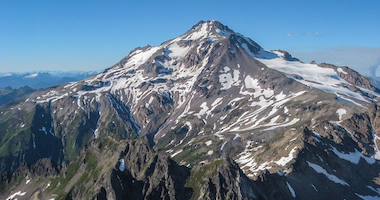



.jpg)
.jpg)
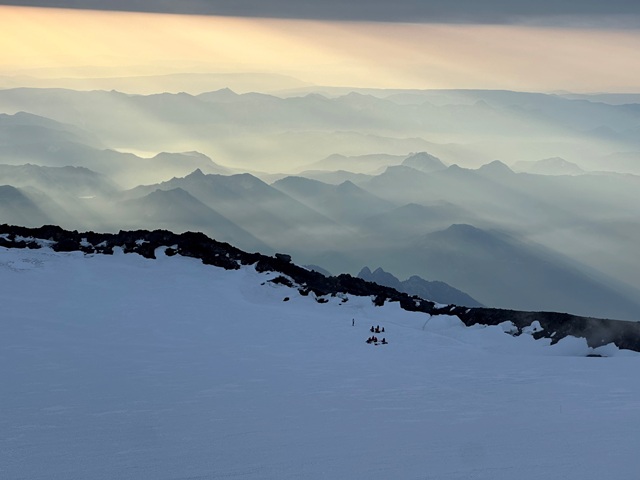
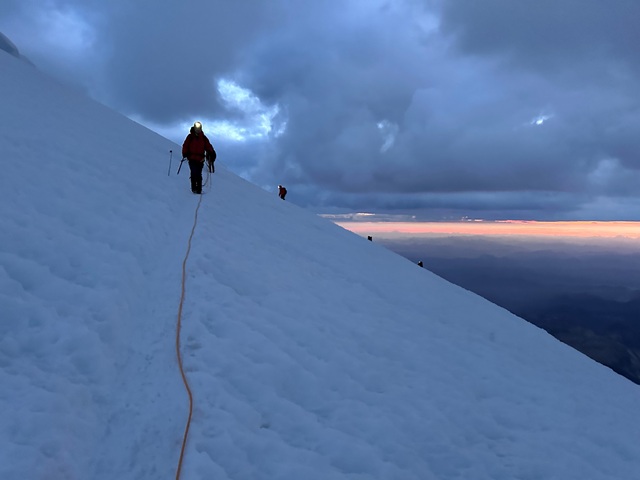

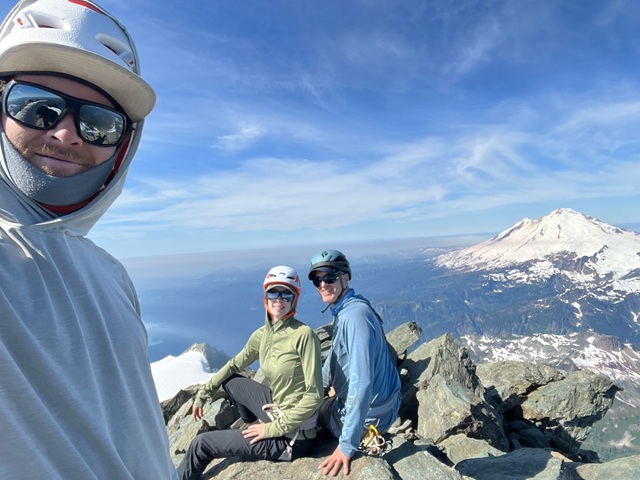
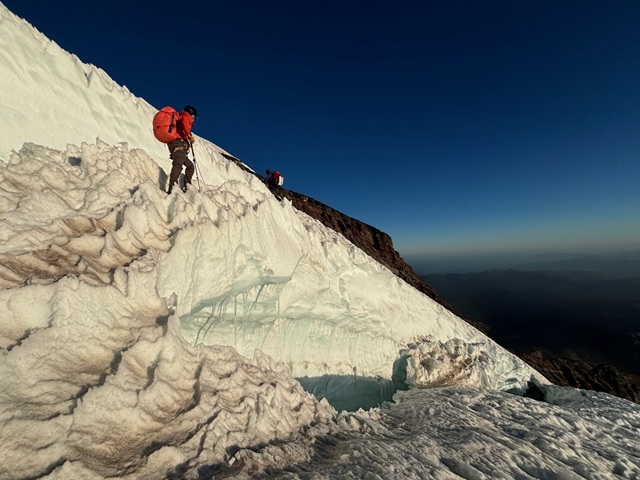
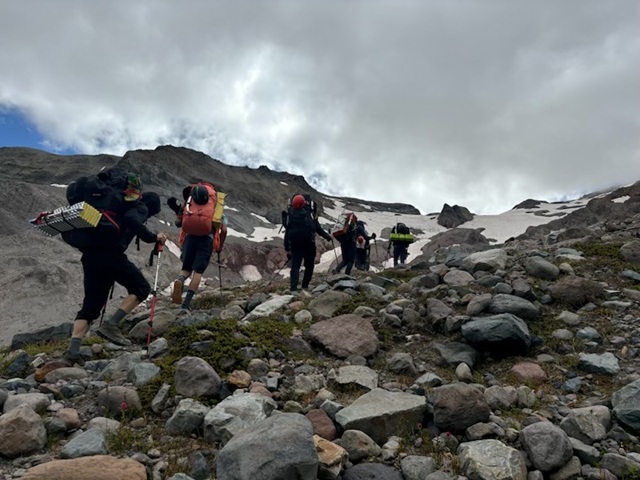
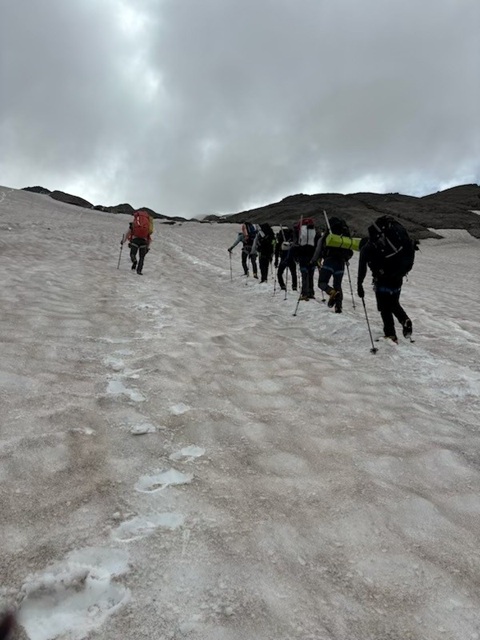
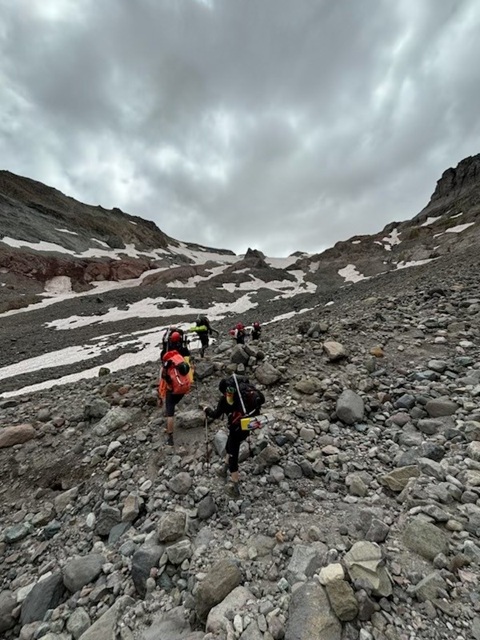
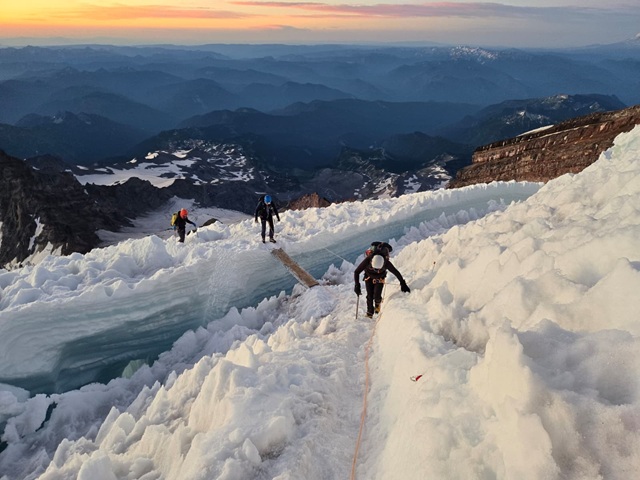
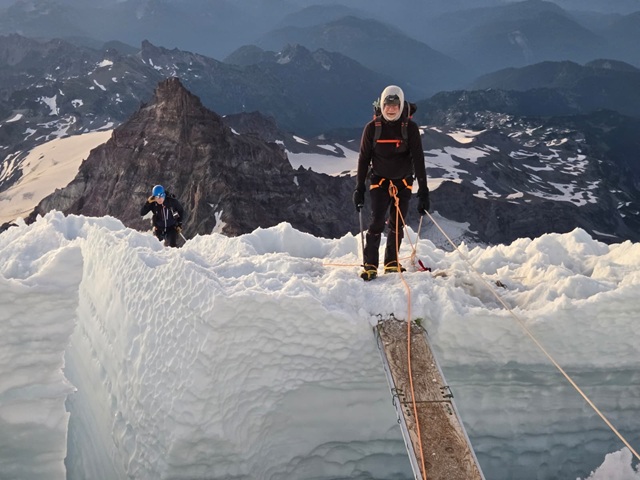
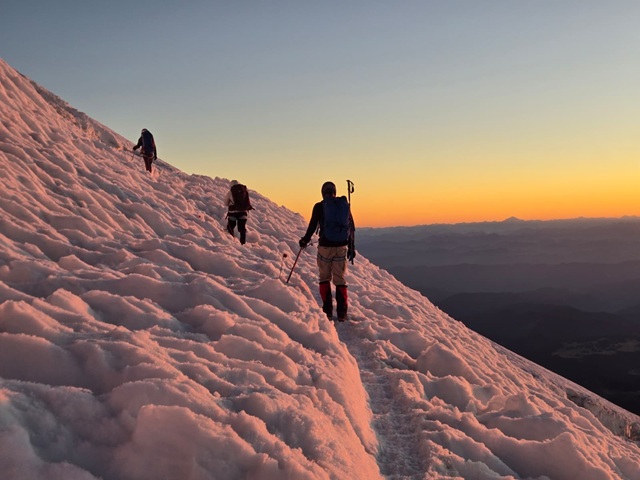
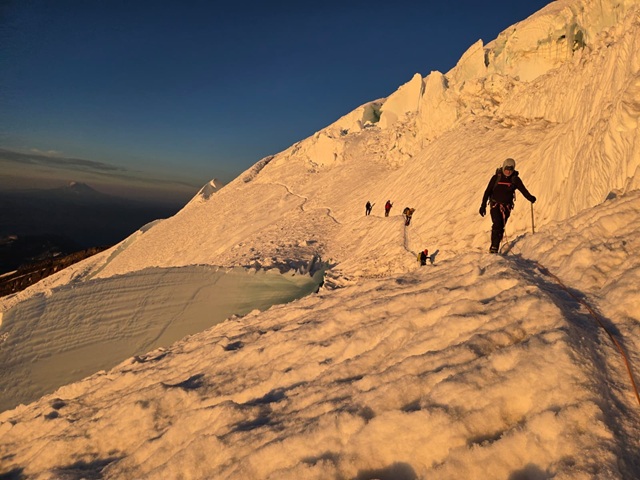
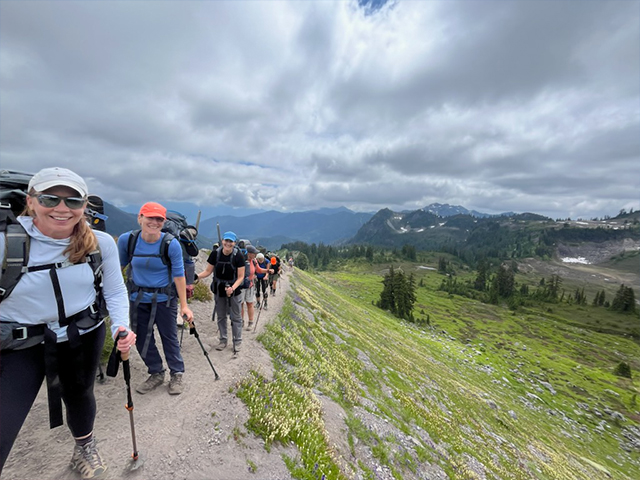
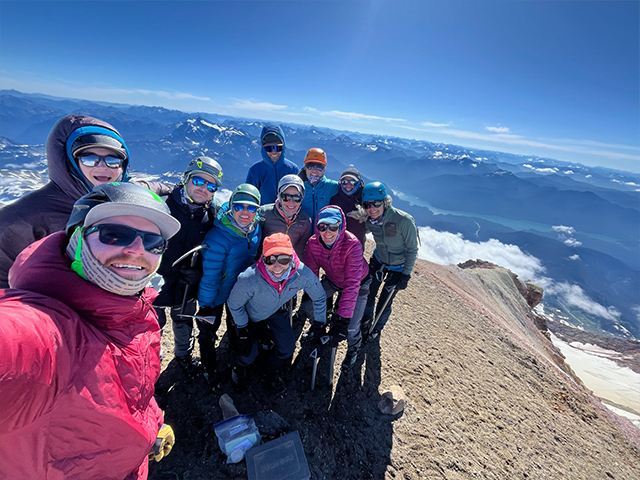
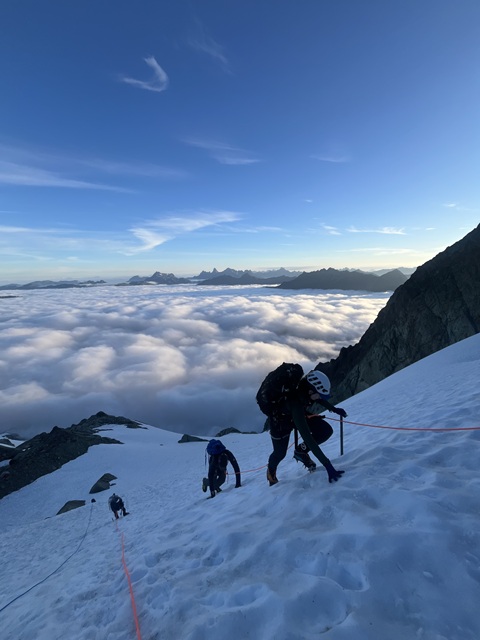

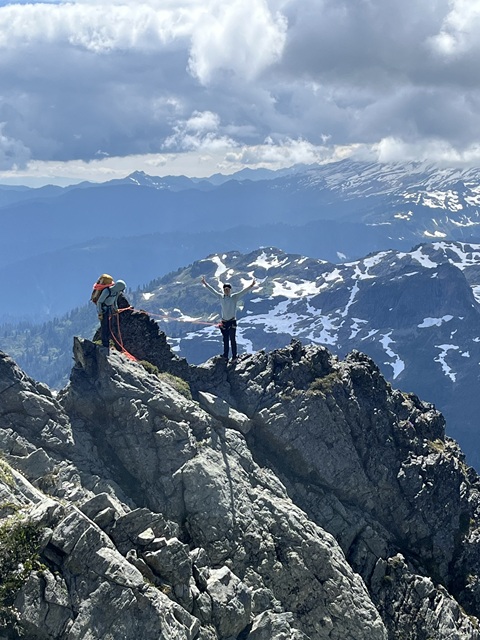






Good luck McGahan’s, and have a fun, safe climb. My best to Bill, and good luck on the projects Sara
Dan Catan and family
Posted by: Dan Catan on 4/2/2011 at 9:14 am
HAPPY 50th BIRTHDAY DAD! I hope y’all are having a gorgeous day on the mountain. I’m so proud of you! Love, Chelsea.
Posted by: Chelsea Miller on 3/31/2011 at 12:02 pm
View All Comments